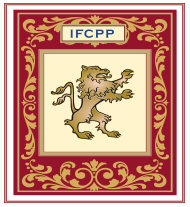Reposted from Tim Richardson
When is the last time you gave a truly important speech? One that you pondered, developed, and hoped would make a lasting impact?
I just gave one last week. I like to think all my speeches are important – I want every one of them to leave the audience inspired, informed, and ready to act. But last week’s speech felt different. It was deeply personal.
It was my wedding toast – for my daughter and her new husband.
I wanted it to be memorable, so I fretted over it for several weeks. My goal was to make it resonate with everyone in attendance, even though it was primarily directed toward two people.
While I felt this short speech was one of the most meaningful I’ve ever given, I’m not entirely sure it landed the way I hoped. It’s not their fault. There were a lot of distractions—other speeches, the cake cutting, pictures, greeting guests, anticipation for their upcoming honeymoon to Mexico, and of course, dancing. A lot of dancing!
Sadly, if you asked the wedding guests what they remembered from my toast that evening, the list might not be very long.
That experience got me thinking about how important it is to make sure your message sticks, especially in today’s distraction-filled world.
Whether you’re giving a presentation to a community organization, speaking at an industry conference, leading an office meeting, motivating a youth sports team, or addressing a committee at your place of worship – you want your message to stick.
And there will always be distractions.
Here are a few thoughts that may help you deliver a sticky presentation, thoughtful speech, memorable report, or inspiring keynote:
1. Prepare. I started writing my toast shortly after my daughter got engaged. I let the content roll around in my head for several weeks before rewriting and revising the first draft.
2. Practice. During my early morning exercise time, I rehearsed what I planned to say – over and over – until I felt completely comfortable with my content.
3. Use humor. I knew the speech might get emotional, so I wanted to lighten it with humor. I came up with the idea to give my new son-in-law a “marriage book” with a funny, made-up title.
4. Use visuals. Instead of just talking about the book, I brought a large, oversized book as a prop when I shared my “secrets to a long and successful marriage.”
5. Ask for input. I’m fortunate to have speaking colleagues all over the world whose experience I can draw upon. When I developed the book idea, I called a speaker friend—who’s also a former stand-up comic—for feedback. He suggested that I not only show the book title but also share a few “chapter titles.” We brainstormed several funny ideas together.
6. Offer a call to action. Although my remarks were directed at two people, I wanted my message to apply to everyone—especially other married or engaged couples in the room.
7. Provide a takeaway. I knew the couple might not fully absorb my words that night, so I made a note to share my speech in writing with them later.
Giving a memorable speech—whether it’s to an audience of hundreds or just a few family members—requires more than preparation. It takes intention, clarity, and connection. No matter the setting, when your words come from the heart and are crafted with care, they have the power to stick long after the music stops and the lights dim.
See Original Post
